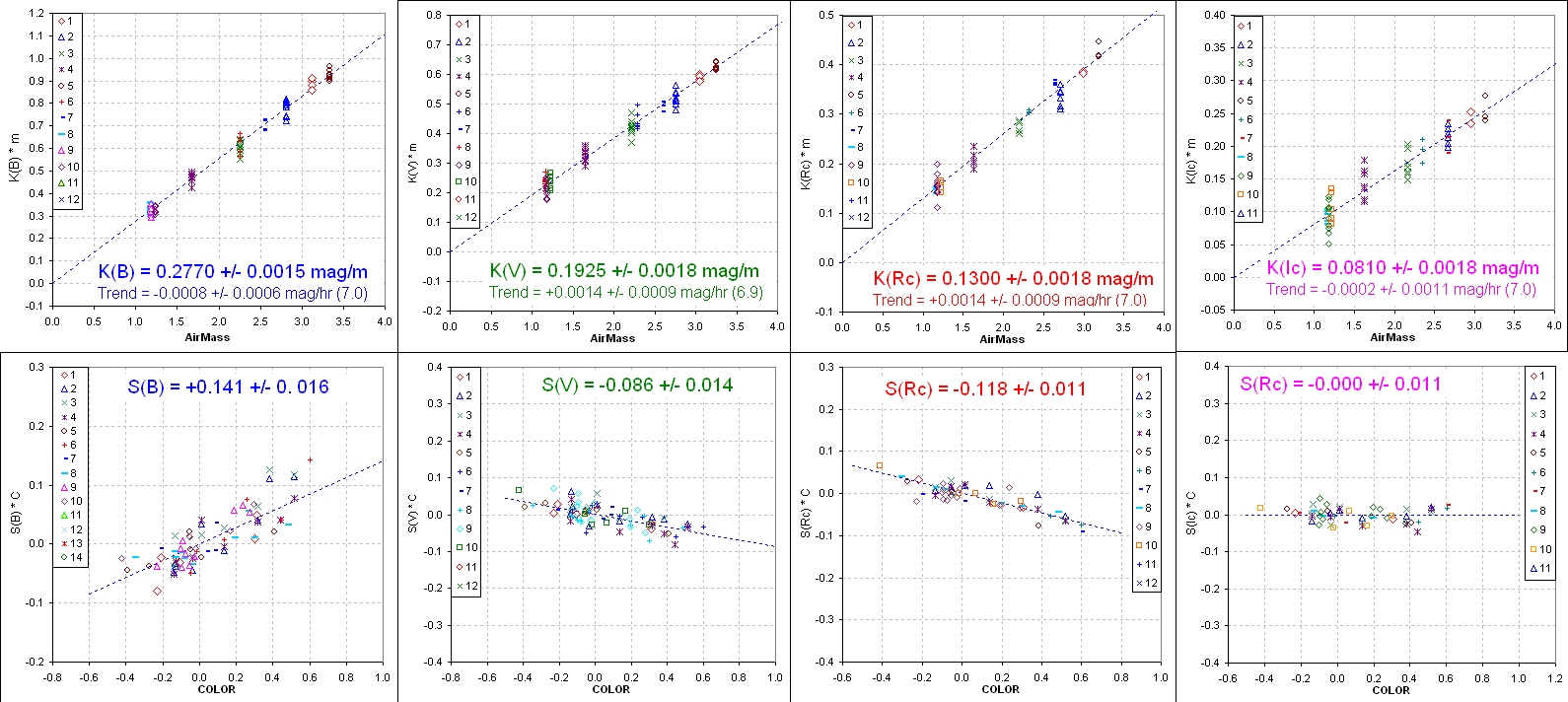Bruce L. Gary; Hereford, AZ, USA
Links internal to this web pageThis web page describes the all-sky observations and analysis conducted for the purpose of calibrating the YY Gem star field. The observations were made on 2011.10.28 using filters B, V, Rc, Ic, g', r', i' and z'.
where Z is a zero-shift constant, specific
to each telescope system and filter (which should remain the same
for many months),
Flux is the star's flux (sum of
counts associated with the star). It's called "Intensity" in MaxIm
DL,
g is exposure time ("g" is an engineering
term meaning "gate time"),
K' is zenith extinction (units
of magnitude per air mass),
S is "star color sensitivity."
S is specific to each telescope system (and should remain
the same for many months),
StarColor can be defined using any two filter
bands. B-V is in common use; I use 0.57 × (B-V) - 0.33,
S2 is a second-order term that is usually
ignored because it is only important for high air mass and extremely blue
or red stars.
This general equation is true for all filter bands (even unfiltered),
though there are different values for the constants for each filter. For
example, the magnitude equation for V-band (omitting the last term in
Eqn 1) is:
V = Zv - 2.5 ×
LOG ( Flux / g ) - Kv' × AirMass + Sv ×
StarColor
(2)
Similar equations exist for bands B, Rc, Ic, g', r' etc.
Notice that in a "generic photometry equation" for
a specific filter there are two terms associated with a telescope system
that should remain constant (provided there are no hardware configuration
changes). This is illustrated for V-band:
V = Zv
- 2.5 × LOG ( Flux / g ) - Kv' ×
AirMass + Sv ×
StarColor
(3)
Zv and Sv are highlighted in green, and the task
of "photometrically calibrating a telescope system" amounts to evaluating
these two constants, as well as their counterparts for any other filter
band of interest. Since extinction is different each night the K'
terms have to be established each observing session; at least this is
a common initial response to a review of the above equation.


WebMaster: Bruce
L. Gary. Nothing
on this web page is copyrighted. This site opened:
2011.11.01 Last Update: 2011.11.01